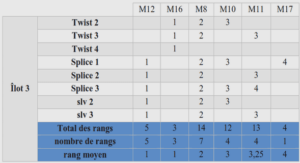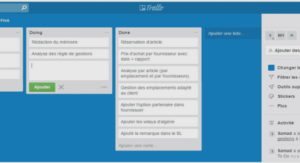CURRICULUM OF Agricultural Engineering
Eigen Values and Eigen Vectors: Eigen values and Eigen vectors and its applications as deformations, Markov processes as Mass Transit Problems, Forecasting of weather and to develop the solution of the system of differential equations for Mechanical systems/Electrical systems and Agricultural/Civil Engineering especially in Public Health Engineering ProblemsSingle Variable Calculus: Basic concepts of single variable function, continuous, discontinuous and piecewise continuous functions, periodic, odd and even functions, algebraic functions, transcendental functions an d its graphical representations, applications of functions in our daily life situationsDifferential Calculus: Limits and continuity, interpretation of a derivative, geometric interpretation, total differential and its applications in our daily life situations, the use of a table of different type derivatives, higher order derivatives, tangents and normal, approximations of a function at a particular point by Taylor’s and Maclaurin’s series, maximum and minimum values of a function, the first derivative test, the second derivative test, point of inflexion and its applications in business and engineeringIntegral Calculus: Basic concepts of integration, a table of integral formulas, some rules of integration, definite integrals, the area bounded by a curve, integration by parts, integration as the limit of a sum, volume revolution, and its application in daily life situationsMultivariate Calculus: Basic concepts of multivariate function, level curves and surfaces, limit and continuity, partial differentiation, vector functions and its differentiation and integration, the directional derivative, the gradient, scalar and vector fields, normal properties of the gradient, divergence, curl, tangents planes and normal lines, extreme of functions of two variables
second partial test, extreme value theorem, methods of constrained optimization and LaGrange multipliersA.C/D.C. motors: Concept of rotating fields, polyphase induction motor, lap and wave winding of single phase and three phase motors, torque and starting characteristics, measuring instruments, transformers. A.C power generators. Electrical distribution and wiring for farm buildings. Electric controls, motor controls, and protection. Selection of farm motors, applications of electricity at farmIntroduction to drawing instruments and their use, various scales, practice of orthographic projection missing lines in orthographic projection, Drawing three views of different objects, Practice of Dimensioning and Lettering, Practice of Sectioning, Conversion of orthographic projection into isometric view, Creating drawings of Engineering Fasteners like Rivets, Cotters Joints, threads etc.Production and properties of common engineering materials: Ferrous metals, iron ores, properties and uses of pig iron, cast iron, wrought iron, steel, standard processes of manufacturing of Iron and steel, open hearth process, basic oxygen processes, production of ingots. Composition/properties and uses of plastics, rubber, fiber glass and composite materials
Soil Perspective: Definition of soil, Edaphology and Pedology, A field view of soil, Soil profile, Subsoil and Surface soil, Mineral vs. Organic soils. Four major Components of Soils, Mineral constituents in soils, Soil organic matter, Soil water, Soil air, clay and humusPreparation of the Sample, Factors affecting dispersion, Methods for obtaining dispersion, Fractionation of the sample, Sieve method. Stokes’ Law. Sedimentation methods, Determination of soil class, Particle and Bulk Density, Pore Space, Structure of mineral soils, Aggregation and its promotion, Structural management of soil, Soil ConsistenceSoil Colloids: General constitution of Silicate clays, Adsorbed cations, Silicate clay structure, Classification of Silicate clays, Chemical Composition of silicate clays, Cation exchange capacity of soils, Plasticity, Cohesion, Swelling, Shrinkage, Dispersion and FlocculationSoil Water: Structure and related properties of water, Soil water energy concept, Soil Moisture content versus Suction, Measuring Soil moisture, Capillary Fundamentals, Types of soil water movement, Saturated flow through soils, unsaturated flow in soils, Retention of soil moisture in the field, Conventional soil moisture classification, Factors affecting amount and use of available soil moisture, Capillarity and root extensionSoil Air and Soil Temperature: Soil aeration definition, soil aeration problems in the field, Composition of soil air, Factors affecting the composition of soil air, Fick’s Law, Aeration in relation to soil and crop management. Soil temperature, Specific Heat of soils, Volumetric Heat Capacity, Thermal diffusivity, and Conductivity, Fourier’s Law, Movement of Heat in soil, Soil temperature controlPlant Nutrients and Fertilizers: Factors controlling the growth of higher plants, The essential elements from air, water and soil, Soil solution, Soil and plant interrelations, fertilizer elements, Nitrogen Fertilizers, Phosphates Fertilizers, Potassium Fertilizers, Mixed Fertilizers, Methods of applying solid fertilizers, Application of liquid FertilizersSaline and Sodic Soils: Climate and salinity, Some basic terms, Saline, Saline alkali and Sodic Soils, Diagnosis of Saline and Sodic Soils, Reclamation Steps of Salt-affected soils, Leaching Requirements, Crop tolerance to Salinity.



